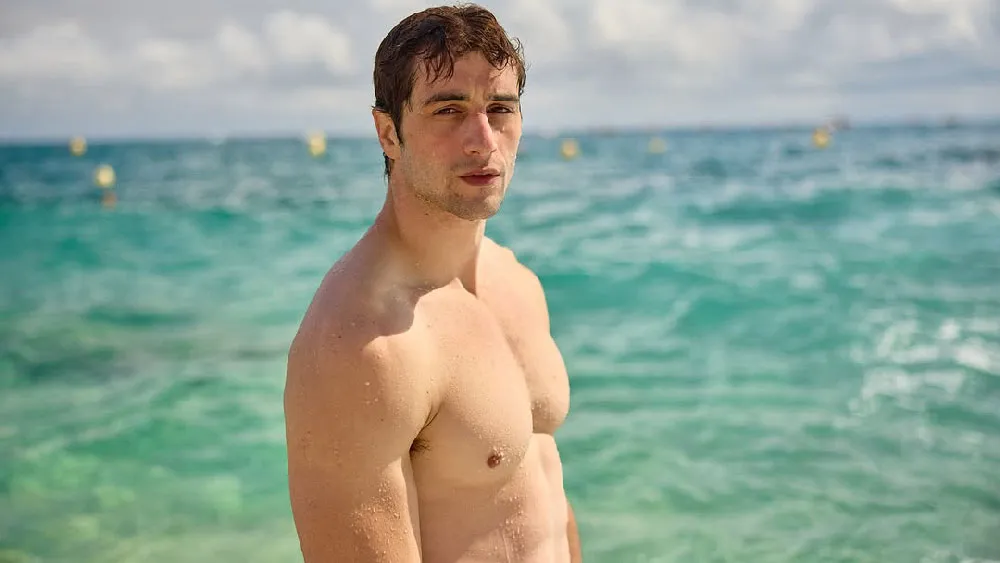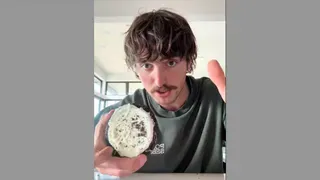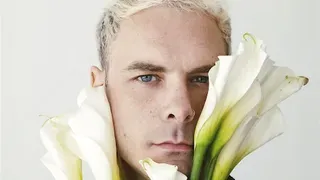February 23, 2018
On the Frida Kahlo and Diego Rivera Art Trail in Mexico City
Anita Snow READ TIME: 4 MIN.
With her unibrow, braided updo, colorful clothing and mustache, the late Mexican artist Frida Kahlo has become an idiosyncratic cult figure in the United States.
Kahlo has an equally passionate following in her native Mexico City. Her face is plastered on everything from handbags and jewelry to wall hangings and aprons. Her husband, the late muralist Diego Rivera, was better known during their lifetimes but she's eclipsed him in fame since their deaths in the 1950s.
All around Mexico City, Frida and Diego-philes can find the couple's work at over a dozen museums and public spaces. Here are some stops on the Kahlo-Rivera trail:
CASA AZUL
The Frida Kahlo Museum, also known as Casa Azul or the Blue House for its cobalt blue walls, was Kahlo's birthplace and childhood home. She later lived there with Rivera for several years during their marriage. It opened as a museum in 1958 and is maintained to look as it would have in the 1950s. It's one of Mexico City's most popular museums, with about 25,000 visitors monthly. Displays include some of Kahlo's artwork, including a still life of watermelons called "Viva La Vida," or "Long Live Life." But the real appeal is the memorabilia and other personal items, with earthenware pots in the kitchen, and Kahlo's corsets and colorful clothing. Located at Londres 247, Colonia Del Carmen, Coyoacan.
DIEGO RIVERA AND FRIDA KAHLO HOUSE AND STUDIO MUSEUM
Kahlo lived on and off in another blue house in the southern neighborhood of San Angel, a smaller structure connected by a walkway bridge to a white and pink house-studio once occupied by Rivera.
The couple lived there beginning in 1934. The buildings designed by painter and architect Juan O'Gorman are surrounded by tall cactuses and located a block from the San Angel Inn, a popular restaurant. Huge papier-mache skeleton and Judas figures populate Rivera's sunlight-flooded studio. Located at Avenida Altavista and Diego Rivera, Colonia San Angel Inn.
DOLORES OLMEDO MUSEUM
This museum is the former home of a famous patron of the couple. It houses one of the most important collections of work by both artists, including some two dozen by Kahlo. Among the best known are Kahlo's "The Broken Column" and "Self Portrait with Small Monkey." (Note that this collection of Kahlo's work is in Italy through June.)
The sprawling complex of stone buildings dating to the 16th century also displays works of other Mexican artists. Luminous green and blue peacocks and hairless xoloitzcuintle dogs roam the grounds. Located at Avenida Mexico 5843, Hacienda La Noria, Xochimilco.
DIEGO RIVERA MUSEO ANAHUACALLI
This museum is a pyramid built from black volcanic rock to house some 50,000 statues and other pre-Hispanic artworks collected by Rivera. Several of his sketches for murals are also displayed. Located at Museo 150, Coyoacan.
MUSEUM OF MODERN ART
Several of the couple's works are displayed here, including "The Two Fridas," one of Kahlo's most famous paintings. Located at Reforma and Gandhi, Chapultepec Park.
DIEGO RIVERA MURAL MUSEUM
This small museum is home to Rivera's well-known mural "Dream of a Sunday Afternoon in Alameda Park." Initially created for a restaurant in the Hotel Prado, the mural was moved to the new museum after the hotel was nearly destroyed in the deadly 1985 earthquake. Located at Balderas and Colon, Colonia Centro.
FINE ARTS PALACE
The Palacio de Bellas Artes houses several Rivera murals, including "Man, Controller of the Universe," which features a workman surrounded by machinery. Several other important Rivera murals can be seen inside the palace, along with works by other muralists like David Alfaro Siqueiros. Located at Juarez and Eje Central, Centro Historico.
NATIONAL PALACE
Rivera painted a series of murals on the stairway walls and corridors of the Palacio Nacional, some depicting the conquest of Mexico by Spanish conquistadors including Hernan Cortes. Other murals feature pre-Hispanic cultures including the Zapotec and Mixtec civilizations. Located at Plaza de la Constitucion, Centro Historico.
SAN IDELFONSO COLLEGE
Rivera's mural "The Creation" can be seen at this museum and cultural center, which is regarded as the birthplace of the Mexican mural movement. Works by other muralists including Jose Clemente Orozco are also displayed. Located at Justo Sierra 16, Centro Historico.
DOLORES SUMP
Inside a monument to Mexico City's water system called the Carcamo de Dolores, Rivera painted a little-known mural, "Water, the Source of Life," in a pool. The work was designed to be viewed underwater but the pool was drained when it became clear that the work would slowly be ruined. Rivera also designed a fountain featuring the Aztec rain god Tlaloc. Located at Rodolfo Neri Vela, Second Section, Chapultepec Park.
ETCETERA
A restaurant named for Kahlo, La Fonda de Frida, is located in the trendy Condesa neighborhood.
Additional Rivera murals can be seen at the capital's La Raza National Medical Center and on the outdoor walls of the Education Department's downtown headquarters.
On Saturdays and Sundays, the Blue House sells tickets for a bus that runs between that museum and the Diego Rivera Museo Anahuacalli. The bus leaves Casa Azul at 12:30 p.m., 2:30 p.m. and 3:30 p.m. Tickets are 150 pesos (about $8) and include admission to both museums.





